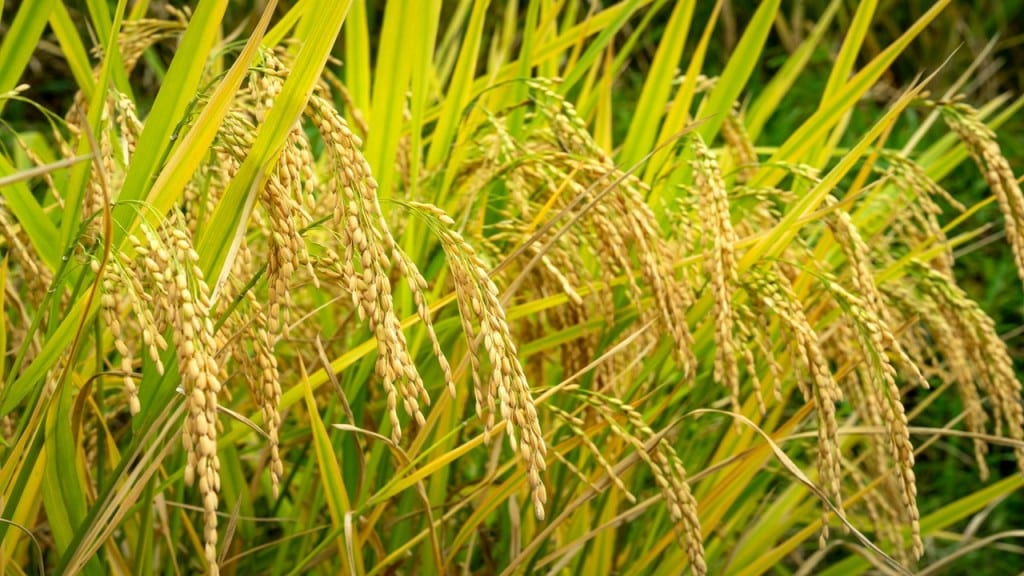Table of Contents
Introduction
There is a big query these days- Is Rice in crisis?
Rice Agricultural issues- economic, environmental, technological, legal, and social should be carefully read.
Rice is India’s largest agricultural crop, with the country also being the world’s biggest exporter. The southwest monsoon’s revitalization this month has resulted in the total area sown under Kharif crops not only recovering but even surpassing last year’s coverage for the same period from June to mid-July. However, rice acreage, at 128.50 lakh hectares (lh) as of July 15, was 17.4 percent down from last year’s 155.53 lh.
In the meantime, news from Punjab talked about Direct Sowing of Rice (DSR) and the traditional method of puddled transplanting of rice (PTR).
It is also important to know about SRI or the System of Rice Intensification.

What is SRI?
In the 1980s, the System of Rice Intensification (SRI) was first developed in Madagascar and since then several countries in the world have been practicing it, including India. It is also called the Madagascar method of rice cultivation. It promises to save 15 to 20 percent ground water, and improve rice productivity, which is almost at a stagnant point now.
- Experts said that it gives equal or more productivity than conventional rice cultivation, with less water, less seed, and fewer chemicals. The net effect is a substantial reduction in the investments in external inputs.
- Direct Seeding of Rice (DSR): In DSR, the pre-germinated seeds are directly drilled into the field by a tractor-powered machine. There is no nursery preparation or transplantation involved in this method. Farmers have to only level their land and give one pre-sowing irrigation.
How does it take place in the field and in which soil?
- First, the field is prepared by plowing. It should be laser leveled before transplanting for proper water management and efficiency for a good crop stand.
- Then irrigation is applied in the field which is not a flood the field like traditional methods but less than that of a well-irrigated field. Then 10-12 days old nursery (young paddy plants) along with soil particles around the root with minimum disturbance to the roots are transplanted in lines, which are marked at a distance of 10 inches from each other with the help of a rope meter.
- The purpose of making lines is to provide a favorable environment for the growth and development of rice plants through such spacing. Seedlings or nurseries should be located adjacent to the main field to avoid a time lag between uprooting and planting, which should not be more than 30-40 minutes so that the roots do not dry out.
- Experts said that unlike DSR, which is suitable only for mid to heavy textured soils, SRI is suitable in all types of soil including less fertile soil as in such soil the number of seedlings can be increased to double.
- Under SRI 2kg seed is required to grow a nursery for one acre against the 5kg seed required in the traditional method.
How are weeds controlled in SRI?
Unlike DSR when weeds are a major problem and weedicides are sprayed simultaneously at the time of sowing, in SRI, which permits greater weed growth because of alternate wetting and drying of fields, the weeds are incorporated into the soil by operating a cono-weeder between rows, which are made at the time of sowing, which adds nutrients to the crop like green manures.
First weeding is to be done 10-12 days after planting. Further weeding may be undertaken, depending on the necessity, at 10-15 days intervals, until the crop reaches the panicle stage. Each weeding enhances yield through a process of soil aeration. For smoother and easier operation of cono-weeder, it is advisable to coincide the weeding with irrigation. comparative results of traditional and SRI methods?
Comparative results of traditional and SRI methods?
Planting in rows and keeping proper spacing, it gives more yield. The paddy cultivation using the SRI method uses less water, needs less labor, and produces better yields. As a result, it is highly beneficial for small and marginal farmers.
In SRI paddy cultivation, only 2 kg of seeds per acre are required. As a result, there are fewer plants per unit area (25 × 25 cm), compared to 20 kg of seeds per acre in conventional chemical-intensive paddy cultivation. (1 acre equals about 0.4 hectares.)
Paddy fields are not flooded under SRI but are kept damp during the vegetative period. After that, only one inch of water is kept. This method uses about half the amount of water that is generally used in conventional farming. In traditional sowing from the day of transplanting till the crop turns 35-40 days fields are kept under flood-like conditions. Then fields are filled every week till a few weeks before harvesting

Limitations of SRI?
Greater weed growth will cause a substantial loss of yield, If unchecked. In Punjab, it is not promoted by the government except through demonstration plots sown over a decade ago. Experts said that it can be sustainable if organic inputs in the soil structure are maintained.
FAQ
- Rice is which type of Crop?
Rice is a Kharif crop that requires high temperature, (above 25°C) and high humidity with annual rainfall above 100 cm.
Must Read
RIGHTS OF DAUGHTER-IN-LAW, KNOW EVERYTHING, 2022
